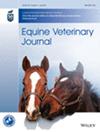Storage-related artefacts in equine blood result in a pseudo-inflammatory leukogram
Abstract
Background
To minimise storage-related artefacts, EDTA-anticoagulated whole blood should be evaluated promptly or refrigerated, a challenge in ambulatory practice. The effects of suboptimal blood storage on equine leukocyte parameters are not well-documented.
Objectives
Document changes in leukocyte number, automated and manual differential counts, and morphology in equine blood stored at four temperatures for up to 5 days.
Study design
In vitro experimental.
Methods
EDTA-anticoagulated whole blood from 13 horses was stored in a refrigerator (4°C), cooler with icepacks (3°C–19°C), room temperature (22°C), or incubator (37°C). Automated analyses were performed using an ADVIA 120 at 0, 8, 24, 48, and 120 h. Leukocyte integrity and morphology were evaluated on blood smears prepared at 0, 2, 4, 12, 24, 48, and 120 h.
Results
Automated leukocyte count was stable up to 24 h in samples stored in the refrigerator, cooler, and at room temperature, but decreased after 48 h in samples stored in the cooler (p < 0.01) or at room temperature (p < 0.05). Pseudo-neutropenia occurred in some samples within 24 h. Storage-dependent increases in cell swelling, ruptured cells, hypolobulated neutrophils, and cytoplasmic vacuolation were observed in samples stored at each condition but appeared later in samples stored under refrigeration. In samples stored at 37°C, the percentage of pyknotic cells increased by 4 h and WBC concentration decreased by 8 h.
Main limitations
The small study population consisted only of clinically healthy horses. The four static temperature conditions do not capture the full spectrum of potential conditions encountered in the field.
Conclusions
In most conditions, leukocyte counts decreased by 48 h, but remained within reference intervals in blood stored up to 120 h. Storage-related leukocyte changes in blood stored under conditions mimicking ambulatory practice resulted in a pseudo-inflammatory leukogram, which could alter interpretation and patient management.

 求助内容:
求助内容: 应助结果提醒方式:
应助结果提醒方式:


